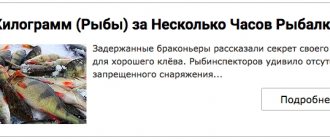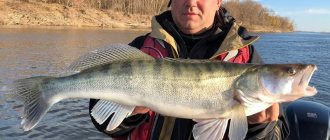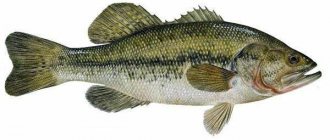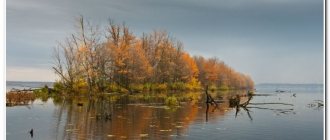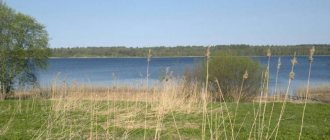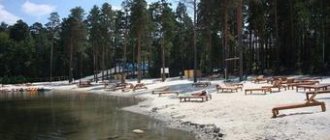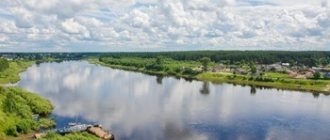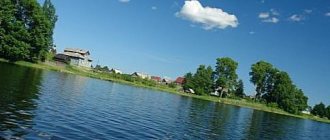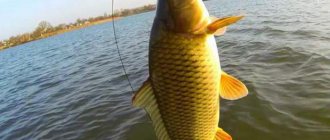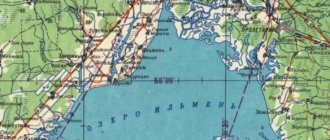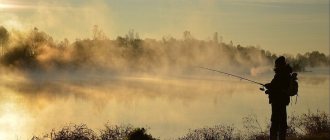Description
Urefty is a fairly large body of water. The shape of the lake is round, its diameter is 4 km, the water surface occupies an area of more than 8 km². There are no great depths here, on average the water thickness is about 4 m, and the deepest point is 6 m. Most of the reservoir has a muddy bottom, but there are sandy and rocky areas.
Lake Urefty is filled with clean, somewhat brackish water. It is not suitable for drinking. The banks of the reservoir are densely overgrown with reeds, the southern sector is a light birch forest.
How to get there
Lake Urefty (Chelyabinsk region), located near the city. From Chelyabinsk the drive to the reservoir is about 30 km. You should take the Sverdlovsky Highway. Drive around Dolgoderevenskoye on the left side and choose the direction to Yekaterinburg. After Dolgoderevenskoye you will have to drive about 10 km, then turn, following the sign on the right side of the road, to the village of Urefty. The road will be dirt for almost 2 km. The village was built in the southwestern sector of the coast.
If desired, you can get there by another road. You get to it if you turn right after Dolgoderevensky. You can drive along the asphalt to the village of B. Balandino, then, near the cattle farms, turn left onto a dirt road. More precisely, there are several dirt roads, along any of them after 4 km you can get to the village of Urefty.
From Yekaterinburg the road to Urefta will go to the village of Sultaevo. From the sign to Sultaevo, the straight line is about another 5 km, then there will be a turn to the village of Urefty. The total distance from Yekaterinburg is about 180 km.
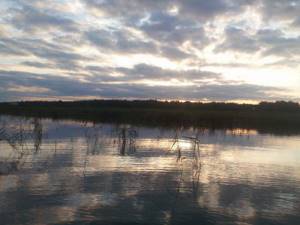
When going on vacation and fishing, you should keep in mind that in rainy weather, dirt roads can become impassable.
Travel to Lake Urefty
It’s very easy to get to the lake from Chelyabinsk, just take the Sverdlovsky highway and drive a few kilometers towards Dolgoderevensky. From there, head to the village of Urefty. She stands almost on the shore. The entire road is 20 km. From Yekaterinburg you will have to travel 180 km. Longitude: 61°25′18.02″E (61.421671), latitude: 55°25′33.86″N (55.426071)
Coming to Urefty for fishing is an opportunity to spend time in the lap of the wonderful Ural nature and enjoy an excellent catch.
Name
The Chelyabinsk region is rich in lakes, their number exceeds 3,700. Lake Urefty is one of 53 large reservoirs. Toponyms, that is, proper names of geographical objects, are mainly formed from Tatar and Bashkir words. Lake Urefty in the Chelyabinsk region was no exception. The name of the reservoir is a derivative of the Bashkir word “uyrek”, which means “duck”. The local dialect changed this word into “Urdek”, but the meaning remained the same. Thus, it turns out that Lake Urefty is a “duck lake”. The village, which arose on the shore of a reservoir, received its “hereditary” name from the nearest significant geographical feature. That is why the Bashkir name took root in the Russian village.
For carp on Urefty. Chelyabinsk fishermen guard the windows
Reed equipment
When fishing in the thick of reeds, the float should, on the one hand, be clearly visible (the upper part is brightly colored), and on the other hand, small in size: a large float, as a rule, has a considerable weight test. The float test is the weight of the sinker that is equipped with a particular float. For example, if a float indicates a test of 8 grams, then the optimal weight of the sinker for this float should be 8 grams. Since carp is a cautious fish and often gets scared by a heavy sinker when biting (throws the bait), for fishing in reeds the most optimal weight of the sinker should not exceed 5 grams. From here the float itself is selected, and the lower and upper rods of which (keel and mast) should not be too long, because when casting, all protruding parts cling to the reeds.
The hook is one of the most important components of the equipment of any fishing rod, and even more so for carp, because carp is a real lake fighter! Understanding which hooks need to be used when fishing for carp comes to every angler with experience (bending, breaking), but the most suitable carp hooks in terms of quality are produced by Maruto, Kosadaka... The strength qualities of these hooks have always been and are at their best . The hook size is usually selected according to the size of the fish, fishing conditions and the bait used. For example, when fishing with bottom fishing rods (on a clean surface), hooks are used that are slightly larger in size than when fishing with a float, since when the carp bites, the carp will hook itself on the bottom gear. And vice versa, when fishing with float tackle in the reeds, and even in cold water (autumn), the fish are very sensitive. Hence, the fishing rod is equipped with a relatively small hook (without sacrificing strength) in order to reliably hide it with the bait and the carp will not sense the catch.
Corn for appetite
So, we found the fish, made windows, fed it, and equipped the fishing rod. What are we going to put on the hook?
Previously, when fishing for carp, the most common bait was canned corn, often seasoned with garlic. In all respects, this is a very convenient attachment: I bought it at any store, poured it into a liter “glass”, added oil and garlic and fish as much as I wanted, periodically adding new “grain” into it. The fish happily pecked at this bait, while this same fish was abundant in the lakes (stocked by fishermen). Then stocking stopped (lack of vouchers), the fish became smaller, and by a large factor, and the remaining carp began to become mischievous: I don’t want your corn, and that’s all! So what should I do? Anglers had to find the keys to the carp’s appetite, which led to the use of baits such as various pasta (scallops, stars with all sorts of additives: dill, vanilla, etc.), and many fishermen returned to fishing for bread (pinch, mashed with boiled potatoes, halva and other things...). All these baits are much more attractive to fish than corn, as they have a richer smell and taste. Previously, they were also used for fishing, but less frequently, since the lakes were full of small carp and the growing juveniles ate such bait at once. Now, due to the lack of permits, the reservoirs are not stocked with fish, and therefore there are almost no juveniles in many lakes. Today, ordinary bread and bread products (rolls, loaves...) in all their diversity are again in the first positions as a nozzle.
Rise above the bottom
Everything is ready, we begin to walk around 8-10 baited reed windows, which takes about an hour and a half. Since the presence of fish in the thicket is easy to notice by the quivering reeds (beacons are walking), there is no reason to waste time on “empty” windows: swim up to the feeding place, if the beacons are silent, you just need to throw bait and row to the next window... Most often, if carp is present in a given reed area, then after an hour he finds bait and, as they say, “gets up for feeding.” At the same time, even with the naked eye you can see how the fish collects bait from the bottom, touching the surrounding reeds with its body, causing it to shudder and sway in different directions. This is called “lighthouses walking”!
It is advisable to cast (lower) the bait to where the fish are feeding the first time, otherwise your luck will be doubtful! Carp is a watchful fish, especially in light water (early spring, autumn), and if you miss the cast, and even get caught and begin to twitch and release the equipment, the fish will immediately sense something is wrong and run away into the windbreak. If this does happen, further waiting for a bite will be useless. It’s better to go further along the feeding “conveyor”, and throw bait into this window and let it “rest”...
The lighthouses are walking, the bread (or other attachment) is carefully lowered under the fish’s nose. The reeds sway, the float drags, but there is no bite! Why?
This happens quite often when the carp is actively collecting bait, but there is no bite. There are two reasons for this. Or today the weather is “not cool”, the fish has no appetite, and it tries to avoid everything suspicious. Or the bottom in the fishing area (thick reeds), on which the bait lies, is very cluttered. In this case, there is a reason to make the depth on the equipment somewhat smaller (by 5-10 cm), so to speak, “raise it above the bottom.” In this case, you can also try to attach a floating attachment - a crust of bread, which also often gives a positive result.
The float is in the window, the beacons are walking, 5-10 minutes of waiting pass (no more), and finally the long-awaited bite! The shuddering float presses down, again, again... Now it begins to fall to one side, a hook, and... an offensive collapse!
Haste is the biggest mistake of a novice carp angler! There is nothing you can do about it, because the feeling of being hooked comes with time, simply put, with experience. You need to hook not when the carp, having tasted it, simply took the bait with its fleshy lips, but when it swallowed it and “went for a walk”! How does it look from the outside, that is, how does it affect the float? Again, everything here depends on the balance of the equipment (float and sinker). If you hook it early, the fish will go away. And if you were late with the hook, the rig was dragged into the impassable support. And again the fish is gone! So the more often we fish, the more experience we have and the faster we learn to hook in time...
Cages in a circle
The first time the carp came off, the second fish dragged the hook into the windbreak, and finally, the first carp was brought to the boat and safely taken on board. Vivat! Victory! And what to do with it now?
Of course, as expected, the fish are in the cage! But what to do with the fish tank if you constantly have to swim from one feeding place to another? Carry a fish tank with you all the time? But this is the noise from the fish, water, dirt in the boat...
It is more convenient to tie a cage, or even better, two cages, on a path along which the fisherman swims, checking his baited windows. I caught a fish, put it in the boat - to the next feeding place. I caught the fish again and got back into the boat. And so on until you come across a fish tank tied to the road. I added up the entire catch - and then along the baited circle...
Time flies quickly when fishing, especially when you are not just sitting in one place waiting for a bite, but are actively searching for carp - on the move. Therefore, the sudden ringing of the mobile phone in my pocket was akin to thunder from heaven. - So what? How long will we still have to wait for you? — the receiver gurgled in Seryozhka’s dissatisfied voice. “I’ve already dried the boat, let’s row ashore faster!”
And indeed, the day did not pass, but simply flew by like a comet, and now the creeping evening was already extinguishing the already dim colors of the autumn day. It’s time to go ashore to dry the oars, especially since the four almost identical in weight (1.5-1.7 kg) carp that I managed to catch would be enough to pamper my old neighbor with fish, and feed myself and the cat Vaska some fried fish. In general, Lake Urefty smiled at us once again, and thank God that there are still good people who multiply and protect the fish in the lakes for us. Today, winter fishing is still far away, so we’re not saying goodbye to the lake, we’ll see you again and again...
Relaxation on the shore. Savages
Lake Urefty is an affordable wild holiday and a convenient countryside recreation center. It is convenient to set up tents on the bank opposite the village. The passage to the water is not convenient everywhere due to the abundance of reeds, but you can find an acceptable path. Swimming in brackish water is very pleasant.

The southern shore of the lake is considered the most convenient for picnics and tents, since the forest is close and the reeds are not very dense. In summer, in addition to fishing, vacationers can pick mushrooms or berries.
Recreation center
Lake Urefty in the Chelyabinsk region gave its name to a small recreation center built right on the shore. The base is equipped with cozy two-story wooden log cabins. Vacationers have an individual bathroom, drinking water, a warm shower and other amenities. Near the houses there are gazebos with barbecues and tables.
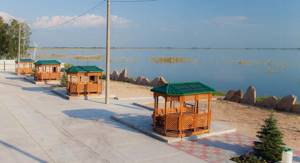
The beach adjacent to the Urefty base is sandy, you can rent a boat and fishing gear, or you can just breathe fresh air in a birch grove.
Fishing
Most often people go to Lake Urefty not just to relax, but to go fishing. Fishing here is excellent, since there are a lot of fish in the reservoir. Setting nets is strictly prohibited, but a fishing rod and spinning rod can provide a good catch.
Of the “native” fish, only crucian carp remains here. The fact is that in 1978 the fish in the lake almost became extinct. The disaster occurred due to a harsh winter and late spring. The ice stayed on the surface longer than usual, but no one was drilling air holes for fish. The lack of oxygen led to a massive death of fish. The lake was empty for more than five years, then it began to be “stocked” with carp fish, grass carp, peled, whitefish, roach, burbot, ripus and others. Today the lake is considered a fish lake. You can fish using vouchers, which are sold in the village of Urefty (central store) or at the recreation center. The collected funds are used to support stocking and cleaning the banks of the reservoir.
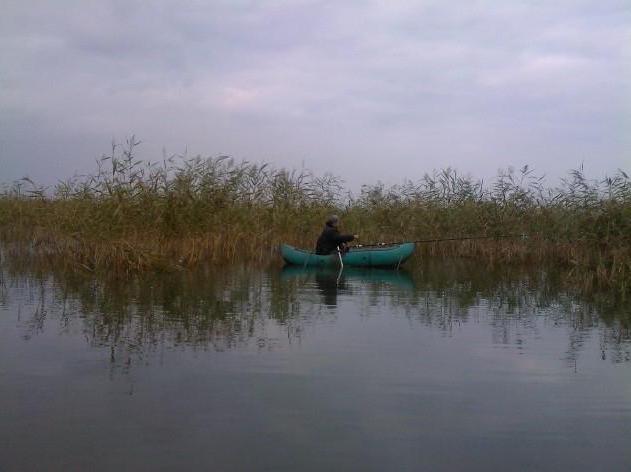
What do fishermen say about Lake Urefty? You can find different reviews. But most of them are positive. Rarely does anyone go without a trophy. The maximum catch on the lake is from a boat, but there is also a great bite from the shore. Some have noted that the lake shores are not well maintained. There is plastic and glass waste that does not decompose naturally. However, do not forget that the cleanliness of the shore primarily depends on the consciousness of vacationers. Base workers cannot keep track of every company and quickly clean out every parking lot. Therefore, it is important not to scatter garbage or litter the banks. In addition, you should not wash cars in lake water.
Fishing on Lake Urefty
The name of the lake most likely comes from the Bashkir word for “duck”. Probably, since ancient times these places have been “duck places”. Indeed, even now any number of waterfowl can find a secluded place in the thickets of Urefta reeds. This lake is famous among the fishermen of the region for its numerous, sometimes very large, inhabitants. You have to pay for the opportunity to fish on Urefty. A day pass costs 250 rubles; you can buy it in the village store or at the fishermen’s base, which is located on the southern shore. Preferential categories of those wishing to go fishing are entitled to discounts.
The catch here is usually wonderful. The native of local waters is silver crucian carp. Perch, whitefish, and pike perch are also well caught. In the 70s of the last century, there was a very serious fish kill on Urefty, but in recent decades the lake has been regularly stocked with fish, so people come here for carp, grass carp, peled and burbot. There are especially a lot of carp; you can catch really large quantities of them. Fishermen count tens of kilograms, although particularly large specimens (about 3 kg) are rarely caught; the bulk of the catch is made up of medium-sized carp. Crucians are also taken away from here in buckets.
Urefty is a traditional summer vacation spot for Chelyabinsk residents, because you can come here on a summer evening even on a weekday, after work. The lake water is very pleasant for swimming and is beneficial in its chemical composition for the human body, reminiscent of sea water. There are organized beaches on the coast with convenient approaches to the water.
